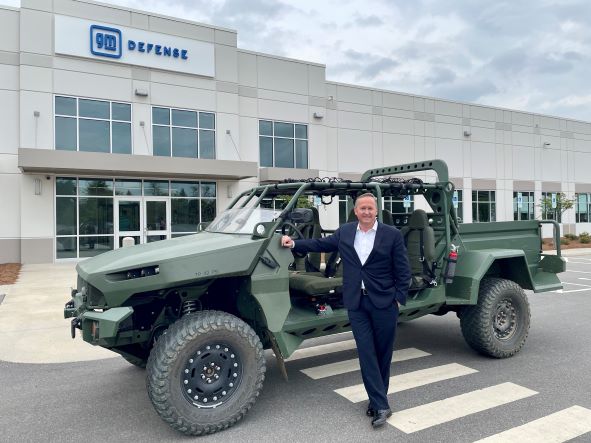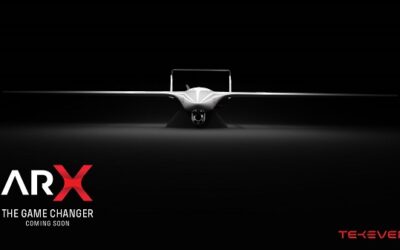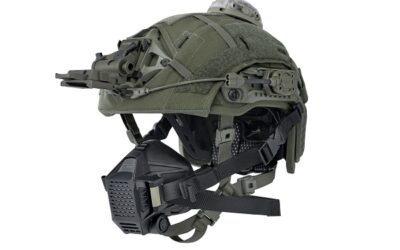US Army Eyes Electrification Successes
Globally, automotive manufacturers are stretching to deliver increasing numbers of electric-powered vehicles through the next several decades. AUSA provides an opportunity to view the efforts of several industry teams to do the same for defence.
The US Army is casting an increasingly wide net, pursuing advances in battery capacity, auxiliary power, electrification, and alternative fuel sources, that will increase operational endurance while reducing carbon emissions. Concurrently, the service continues to maintain multiple cooperative agreements with other governmental and private organisations, to advance relevant innovation applicable to military operations.
An Army spokesperson explained electrification has the potential to support a broad spectrum of platforms, both current and future. “In research and development, our electrification efforts focus on constituent technologies that are platform-agnostic, like anti-idle capabilities, electrification of vehicle auxiliary systems, and drivetrain hybridization. Our industry partners provide the overwhelming majority of investment in electrification of wheeled vehicles, while most of the Army’s investments in vehicle electrification [is] focused on combat vehicle capabilities and the electrification challenges that are unique to heavy, armored vehicles (including power needs and heat dissipation).”
The service has a deepening business case to advance electrification, for mission and tactics, up through a more efficient vehicle life cycle. The spokesperson noted that, ultimately, Army’s efforts are driven by capability. “Silent mobility and silent watch are mission-enablers that we think have a great deal of value for the warfighter. Hybridization technologies that reduce fuel consumption reduce the burden on our logistics train, and decrease our damaging effects on the changing climate. Although not a near-term target, where electric motors may succeed internal combustion engines, the reduction in the quantity of parts, and specifically of moving parts, may further reduce vehicles’ maintenance burden as well.”
Stephen duMont, President, GM Defense, noted his company retrofitted an Infantry Squad Vehicle prototype to produce the All Electric Military Concept Vehicle in three months from design to inception, with the goal to showcase the speed at which his team can leverage commercially available batteries and conduct standard benchmark testing for vehicles. “This demonstration gave GM Defense the ability to test and evaluate the performance, off-road inclines, speed, braking systems, and the like, while putting commercially available electric battery technology through its paces in a military-type vehicle. Most important, we’re getting invaluable feedback via soldier touchpoints that will enable us to deliver a mobility solution that best meets their needs.”
GM Defense benefits from taking advantage of ‘big’ GM’s portfolio – in this instance, the parent’s commitment to investing over $35 billion in vehicle electrification and autonomy capabilities. “As commercial battery electric technology advances, we expect to see longer range, increased safety and more convenient charging options at the tactical edge,” duMont observed.
John Bryant, President of Oshkosh Defense, noted, “I can tell you that, as a technology-focused manufacturer, we’re pushing the boundaries of innovation and advancement in electrification for our customers. For many years, we’ve been developing, testing and evolving hybrid-electric variants of our tactical wheeled vehicles […] Oshkosh is ready now to offer hybrid-electric drivetrains for our heavy, medium and light tactical wheeled vehicles.”
Oshkosh Defense is also supported by ‘cross fertilization’ – the flow of technologies among defence companies and those in adjacent market space, in this case, to best meet the electrification requirements of its customers. “We are also able to leverage the full resources and expertise of the entire Oshkosh Corporation family of companies to provide hybrid and battery electric vehicles […] Our commitment to electrification and other next-generation technologies expanded in December 2020 with the acquisition of Pratt Miller, which specializes in advanced engineering and innovation across motorsports and other ground vehicle markets, and continues in 2021 through our investment in EV battery provider, Microvast, and other strategic partnerships,” Bryant offered.
Marty Kauchak reporting from Washington, DC for MON

























